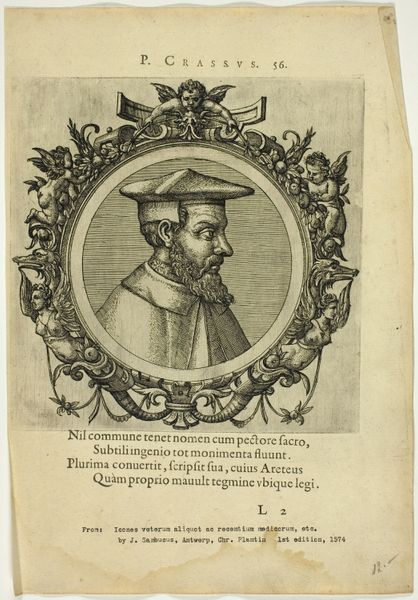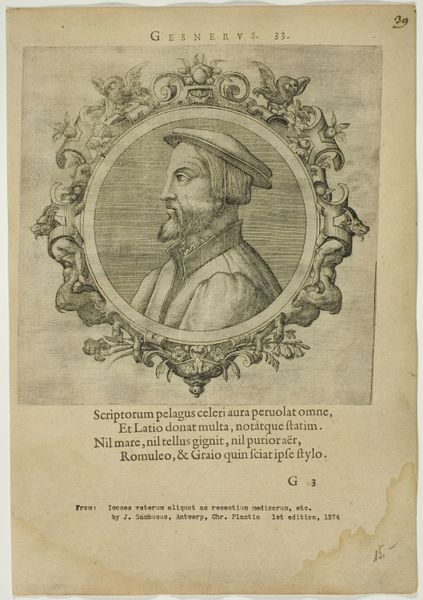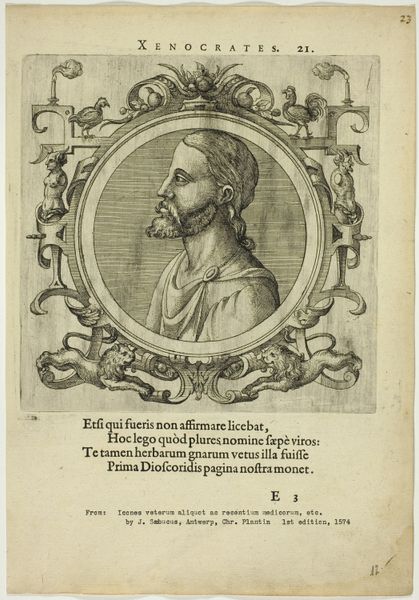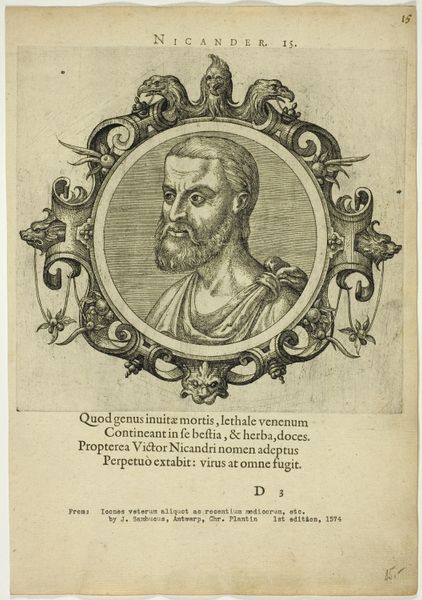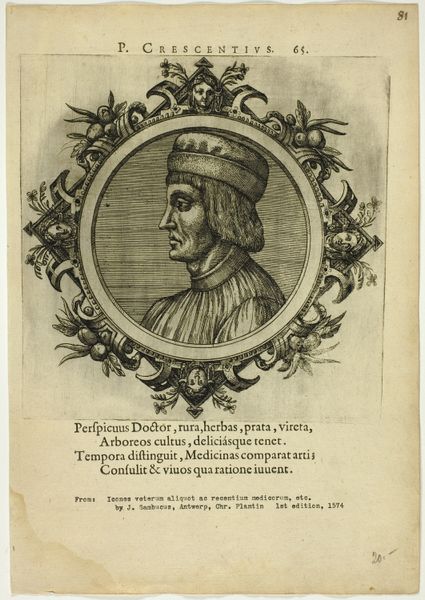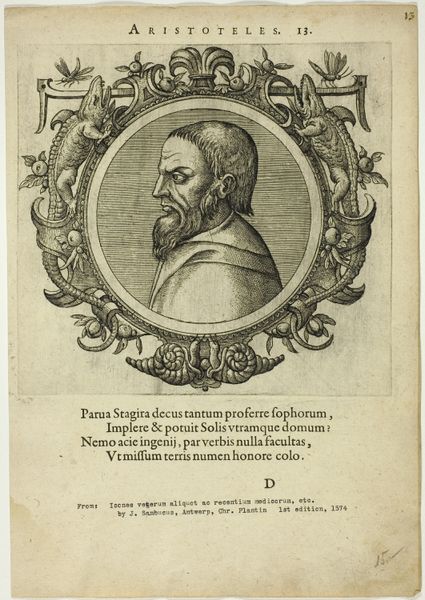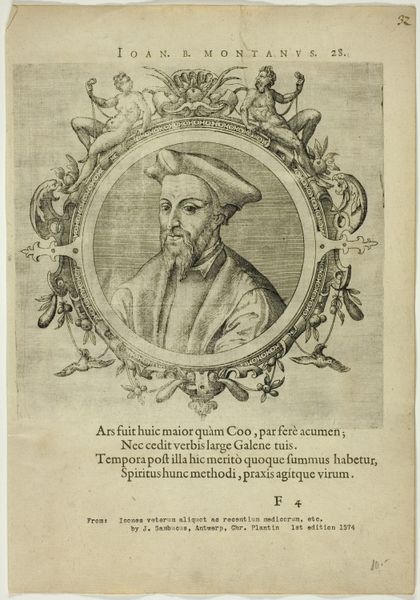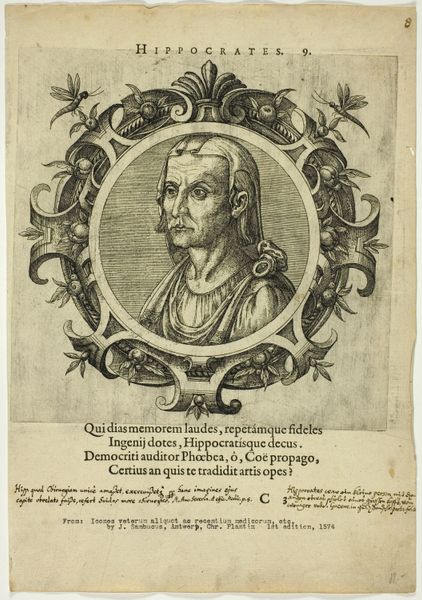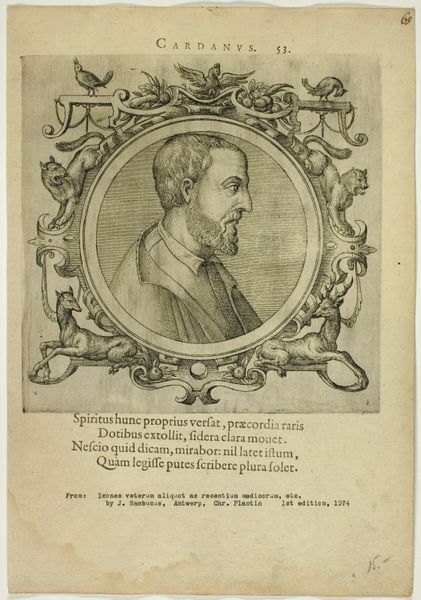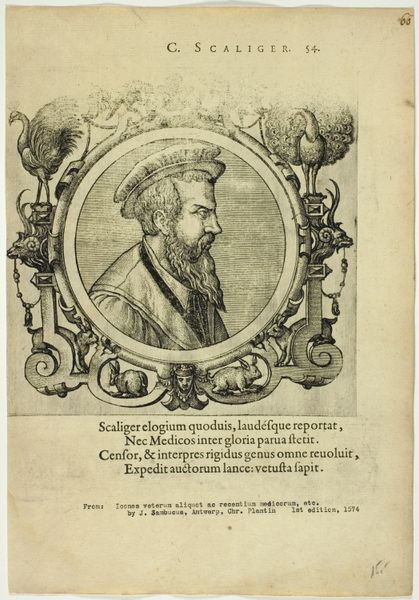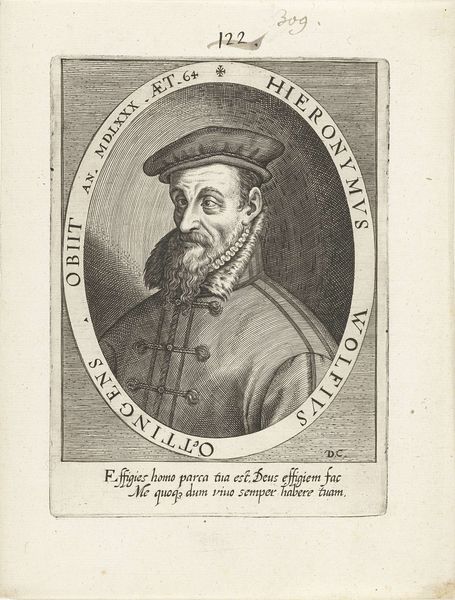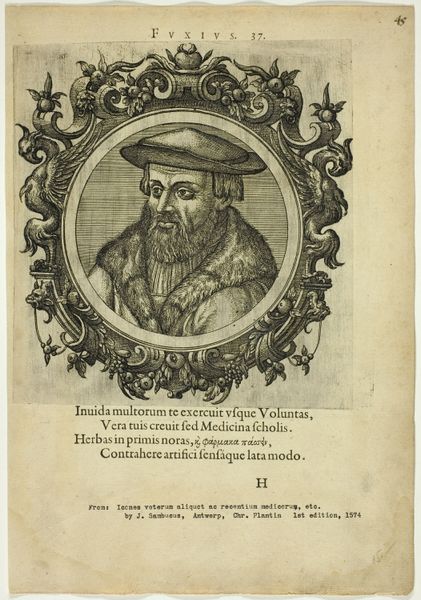
drawing, print, etching, paper
#
portrait
#
drawing
# print
#
etching
#
paper
#
11_renaissance
#
northern-renaissance
Dimensions: 191 × 184 mm (image/plate); 312 × 215 mm (sheet)
Copyright: Public Domain
This is Portrait of B. Victorius, made around 1574 by Johannes Sambucus. It’s an engraving, meaning the image was incised into a metal plate, likely copper, then printed on paper. The linear quality of the image is determined by the engraver's burin, the tool used to cut the lines. Look closely, and you'll see how the density and direction of these lines create shading and texture, defining Victorius's face and clothing. The surrounding decorative elements – animals, foliage, and geometric patterns – are also rendered with this technique. This was a labor-intensive process, requiring great skill and precision. Engravings like this were not just artistic creations; they were also products of a complex system of workshop production, involving the labor of artisans and the distribution networks of the printing industry. Consider the social context. Prints like this circulated widely, contributing to the spread of knowledge and ideas. The very act of engraving transforms an image into a reproducible commodity. This had a democratizing effect, making art and information more accessible, but it also raised questions about originality and value.
Comments
No comments
Be the first to comment and join the conversation on the ultimate creative platform.
